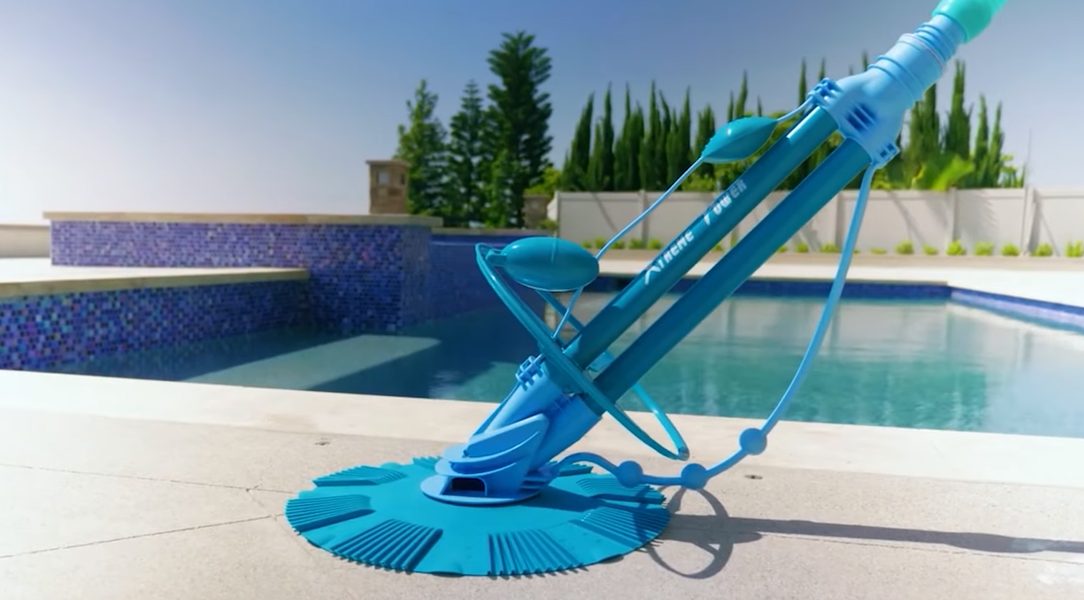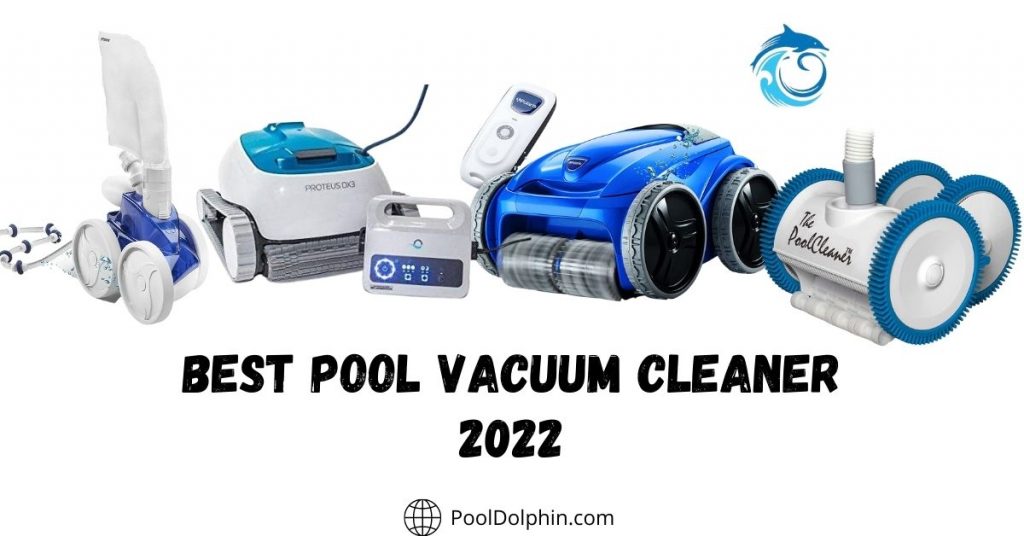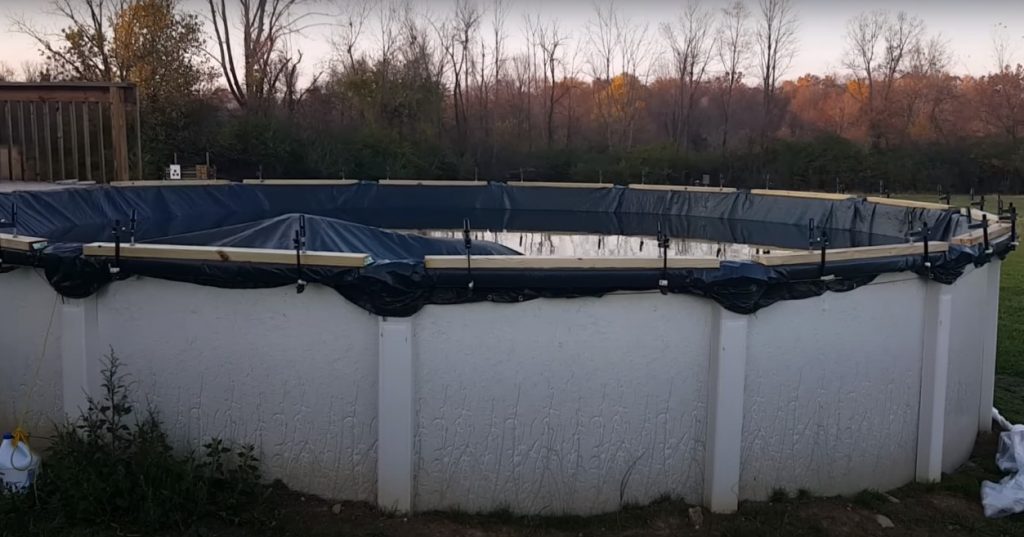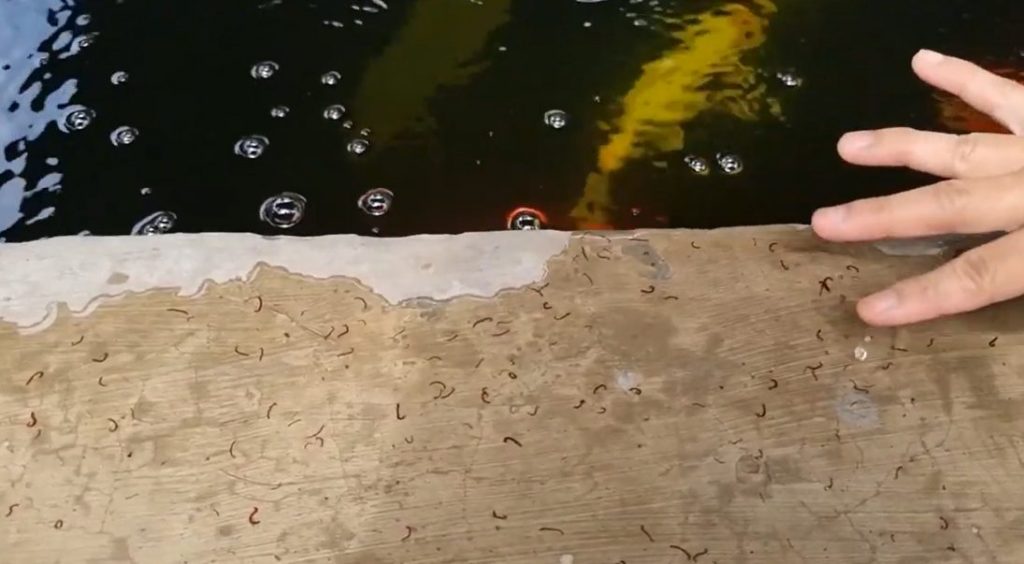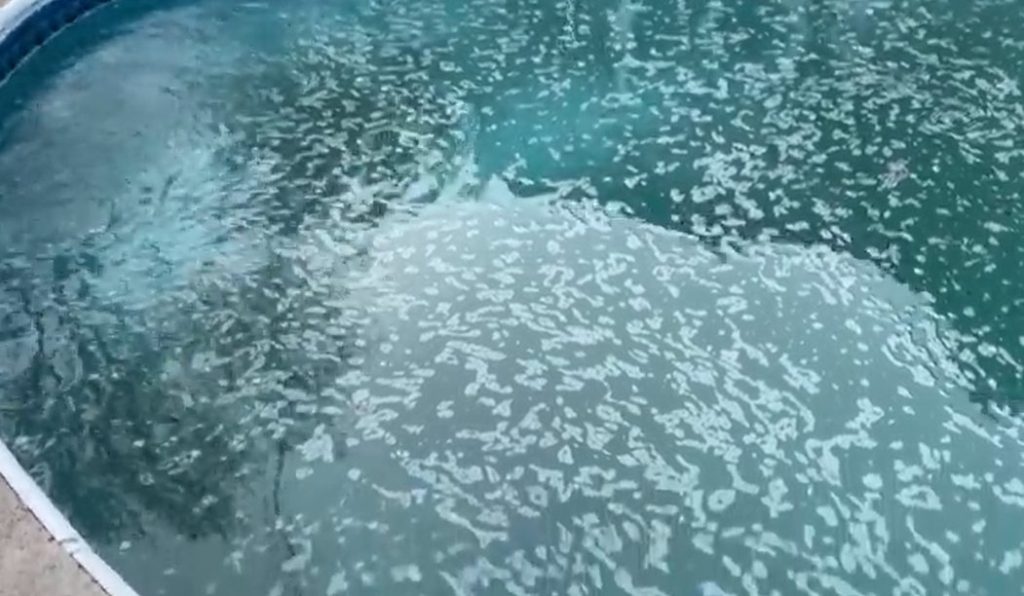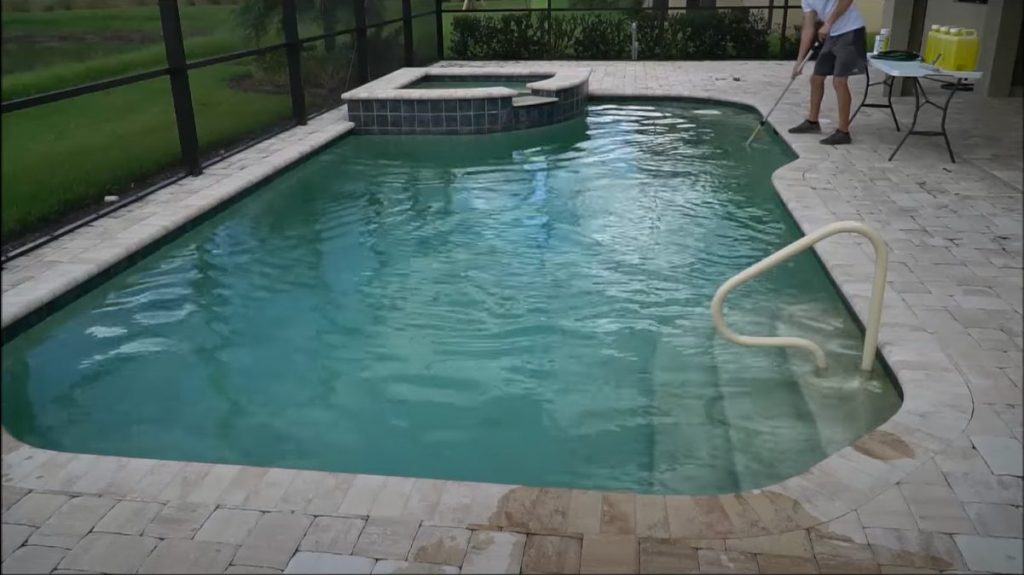The best manual Pool vacuum is a crucial piece of equipment for every pool owner. An automatic pool cleaner is great for everyday cleaning, but it can’t vacuum cloudy water or algae.
Our full in-depth guide will show you how to vacuum an inground or best above ground pool quickly and effectively so you can get back to swimming.
What You Need To Vacuum Your Pool Manually
In order to manually vacuum your pool, you’ll need a few things:
- A Flexible pool Vacuum Head
- A Telescopic Pool Pole
- A Flexible Pool Hose
- A Vacuum Plate
Steps to Installing and Cleaning Your Pool with a Manual Pool Vacuum
Before you get started, you’ll want to make sure that the pool pump and filter are both running smoothly. Additionally, it’s important to check your starting pressure to ensure that everything is running as it should be.
If you have a D.E. or sand filter and find that the pressure is higher than normal, be sure to backwash it. If you have a cartridge filter, double-check that the cartridges are clean and free of any debris. For more thorough instructions, consult our guide on cleaning every type of filter.
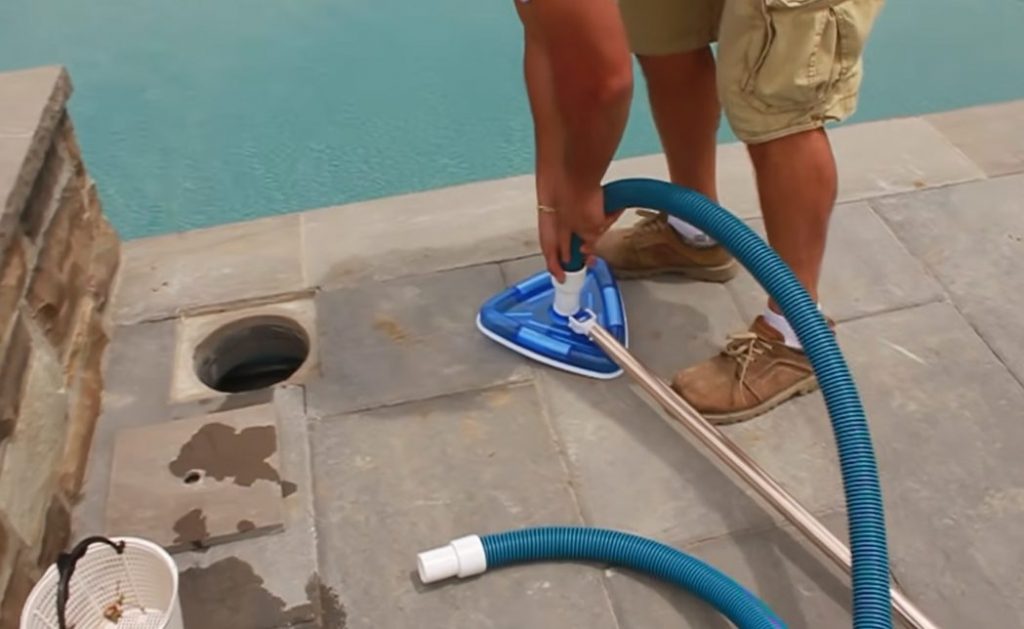
If you’re dealing with dirty or cloudy pool water, you can change your filter valve settings to the “waste” setting. This will bypass your filter and send the dirty water out through the waste port.
If you have a cartridge filter, just remove the drain plug and attach a backwash hose. Your pool water level will drop while you vacuum, so use a garden hose to add fresh water while you’re vacuuming.
1. Attach Vacuum Head and Hose to the Telescopic Pole
Make sure the pump and filter are running before you start. Attach the best pool vacuum head to the open end of the telescopic pole, then attach one end of the hose to the vac head. If the pool vacuum hose is slippery, use a hose clamp to keep it in place.
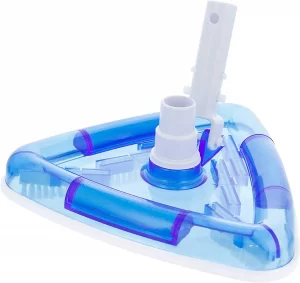
2. Fill The Vacuum Hose with Water to Remove Air
There are a few things you need in order to use best pool vacuum for algae. First, you’ll need the vacuum head, telescopic pole, and hose.
Place the vacuum head on the bottom of the pool, and then take the other end of the hose and place it against a return jet. Doing this will allow water to flow through the hose and push all of the air out.
The next step is crucial: you have to make sure that the only line that’s open to the pump is the vacuum inlet. If there are other lines open, particles and debris will be sucked into the pump and you’ll have to start all over again.

3. Attach Vacuum Hose to Pool Skimmer
To use the skim vac plate, attach it to the end of the hose you placed against the return jet. Next, block the opening with your hand and bring it over to the pool skimmer. Finally, insert it into the skimmer on top of the basket, making sure there is a good seal or suction will be lost.
If you’re not using a vacuum plate, remove the skimmer basket inside and use your hand to block the end of the water-filled hose. Then, place the hose into the skimmer inlet, making sure it’s firmly inserted into the suction hole at the bottom of the skimmer.
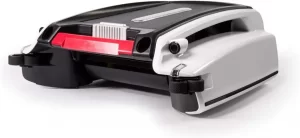
4. Start Vacuuming
Now that you’ve built a powerful siphon using your filter system, you can vacuum the floor of your pool with ease. Start at the shallow end (if you have one) and move toward the deep end of the pool in slow, sweeping strokes.
If you have a round pool, just start at one side and move left or right across the floor.
Use long, slow, sweeping strokes to clean. Make sure your strokes overlap slightly to avoid leaving any debris behind. Rushing will just kick up debris, which will reduce visibility and take hours to settle down again. So take your time and enjoy the process.
If the water in your pool becomes cloudy, don’t worry. Just give it a couple of hours to resettle, then come back and vacuum again. If the vacuum head becomes stuck, just switch off the pump for a second to break the vacuum force and set it free.
Also, be sure to monitor your pool filter’s pressure gauge as you vacuum. If the pressure rises above the levels recommended by the manufacturer, take a break, and backwash your filter.
5. Disconnect The Vacuum and Perform a Final Clean
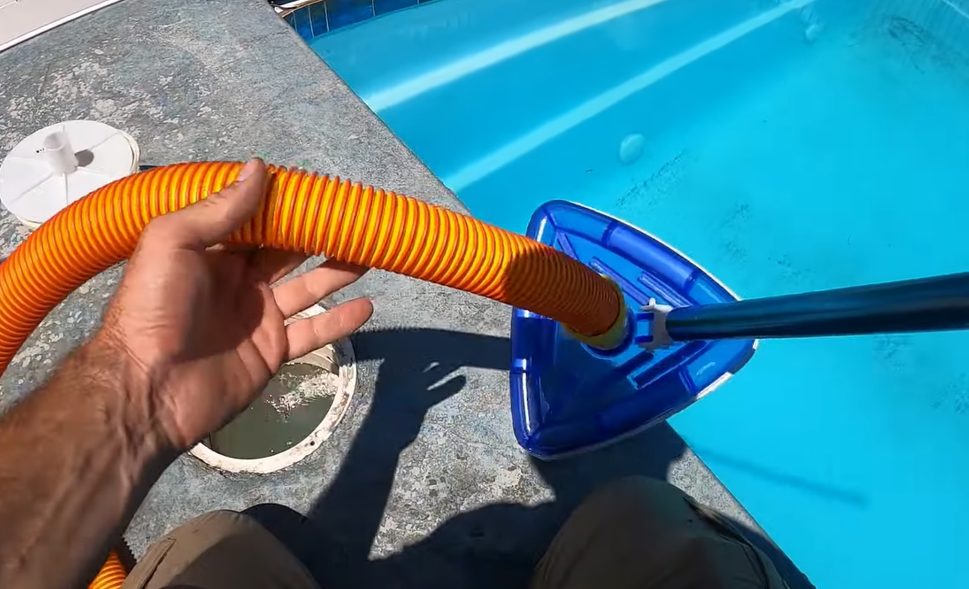
After you vacuum your pool, it’s time to clean up and get back to swimming. Here’s what you need to do:
- Remove the vacuum head from the telescoping pole, and drain any water still in the vacuum hose.
- Attach your cleaning brush to the pole, and use it to scrub away any algae, dirt, and debris from the sides of the pool.
- Clear any debris in your pump strainer basket.
- Backwash the filter if you have a multiport valve and used the “Filter” setting.
- After vacuuming your pool with the “Waste” setting, remember to switch the valve back to “Filter.” Keep adding fresh water to the pool until the water level is restored.
- Once you’ve refilled the pool, test the water and adjust the alkalinity, pH, and chlorine levels as needed.
- Rinse all your equipment with freshwater, dry it off, and put it away. This will help keep it in good condition and prevent unnecessary wear and tear.
Do You Like Vacuuming With Automatic Pool Cleaners
Do you want to save your time and money on vacuuming the pool? The best Robotic pool vacuum cleaner can do it for you.
1. Robotic Pool Cleaners
Looking for an independent pool vacuum for above ground cleaner that uses electricity? Look no further than our automatic best inground pool cleaners. You simply plug them in, drop them in your pool, and let them do all the hard work on their own.
Plus, you don’t have to worry about emptying the built-in filter bag – we take care of that for you. Our best automatic pool cleaners are the best on the market, but they may be a bit pricer. However, you get what you pay for when it comes to quality and performance.

2. Best Pressure Side Pool Cleaners
We highly recommend investing in a Polaris Pool Cleaner. However, if you’re looking for our favourite one, here it is: The cleaners hook up to your return line and use the water pressure from your filter system to power a self-contained automatic cleaner around the bottom of your pool, picking up debris into a filter bag as it goes.

3. Suction-Side Pool Cleaners
Best Automatic pool cleaners are designed to make your life easier by doing vacuuming for you. They operate in much the same way as when you vacuum your pool manually, but with the added bonus of being able to move around the bottom of your pool by themselves. That said, we still recommend that if you’re going to make this investment, that you go for a pressure-side or robotic cleaner. Having said that, here’s our favourite suction-side automatic best pool cleaner:
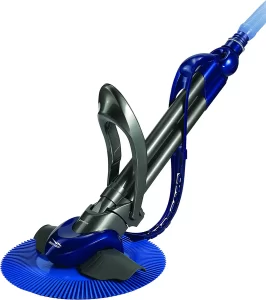
FAQ For Vacuuming your Pool Manually
1- How long does it take to manually vacuum a pool?
The pool vacuum robot is specially designed to clean all kinds of pools quickly and easily. It takes less than 2 hours to clean your pool with built-in water filtering and scrubbing. Ideal for swimming pools up to 50 feet.
2- What setting do you put pool pump on to vacuum?
If you have a sand filter and are vacuuming to waste, set the filter to the “waste” option.
Otherwise, leave the setting on “filter” and turn the pump on to begin vacuuming. Vacuum your pool just as you would vacuum your living room, picking up debris or algae as you go. As you vacuum, keep an eye on the vacuum gauge and empty the bag when it gets full.
3- How often should a pool be vacuumed?
Vacuuming your pool once a week is a good general rule. However, you should also vacuum your pool any time you notice an abnormal amount of debris, dirt, or leaves on the pool floor. For example, after a heavy storm, it’s likely that your pool will need to be vacuumed.
4- Should I vacuum my pool before I shock it?
Although it’s always best to vacuum and shock your pool at the same time, if you can only do one or the other, it’s better to vacuum first. A good scrubbing and vacuuming of the pool walls and floor ensures that dirt and debris that can affect the water chemistry is removed before you add chlorine. This way, your pool will be as clean as possible.

